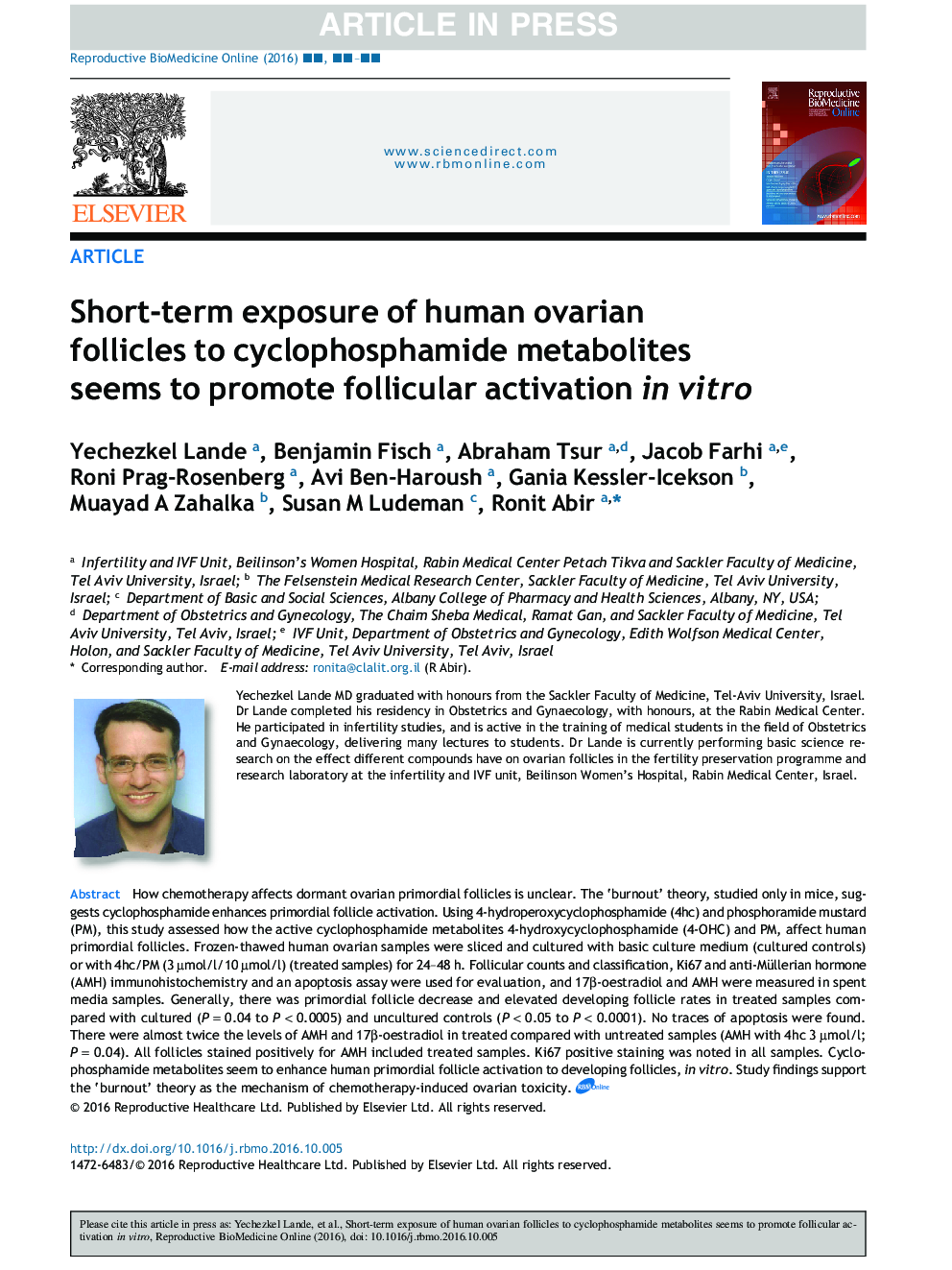| Article ID | Journal | Published Year | Pages | File Type |
|---|---|---|---|---|
| 5696818 | Reproductive BioMedicine Online | 2017 | 12 Pages |
Abstract
How chemotherapy affects dormant ovarian primordial follicles is unclear. The 'burnout' theory, studied only in mice, suggests cyclophosphamide enhances primordial follicle activation. Using 4-hydroperoxycyclophosphamide (4hc) and phosphoramide mustard (PM), this study assessed how the active cyclophosphamide metabolites 4-hydroxycyclophosphamide (4-OHC) and PM, affect human primordial follicles. Frozen-thawed human ovarian samples were sliced and cultured with basic culture medium (cultured controls) or with 4hc/PM (3âµmol/l/10âµmol/l) (treated samples) for 24-48âh. Follicular counts and classification, Ki67 and anti-Müllerian hormone (AMH) immunohistochemistry and an apoptosis assay were used for evaluation, and 17β-oestradiol and AMH were measured in spent media samples. Generally, there was primordial follicle decrease and elevated developing follicle rates in treated samples compared with cultured (P = 0.04 to P < 0.0005) and uncultured controls (P < 0.05 to P < 0.0001). No traces of apoptosis were found. There were almost twicethe levels of AMH and 17β-oestradiol in treated compared with untreated samples (AMH with 4hc 3âµmol/l; P = 0.04). All follicles stained positively for AMHincluded treated samples. Ki67 positive staining was noted in all samples. Cyclophosphamide metabolites seem to enhance human primordial follicle activation to developing follicles, in vitro. Study findings support the 'burnout' theory as the mechanism of chemotherapy-induced ovarian toxicity.
Keywords
Related Topics
Health Sciences
Medicine and Dentistry
Obstetrics, Gynecology and Women's Health
Authors
Yechezkel Lande, Benjamin Fisch, Abraham Tsur, Jacob Farhi, Roni Prag-Rosenberg, Avi Ben-Haroush, Gania Kessler-Icekson, Muayad A. Zahalka, Susan M. Ludeman, Ronit Abir,
